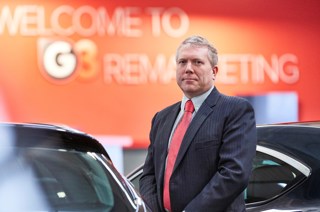The latest addition to AM’s ‘5 minutes with…’ features series sees editor Tim Rose sit down with Association of Fleet Professionals (AFP) chair Paul Hollick to discuss its new dealer standard and what it might mean for car retailers.
The AFP has recently launched a new voluntary industry initiative for dealers who supply vehicles to fleet customers called the Dealer Standard. What has prompted the need for this?
The Dealer Standard has been created in response to requests from association members. The main impetus comes from that fact that vehicles have become so much more complicated. You can’t sit someone in a car and expect them to work out the essential controls in a couple of minutes in a way that was accepted just a few years ago. This is especially the case where drivers are taking on their first electric vehicle (EV). A familiarisation process has become a must. It’s also the case that delivery standards vary widely, according to the experiences of AFP members. For example, it is not uncommon for vehicles to arrive dirty, without the correct documentation or for EVs to be handed over with little charge remaining. The Dealer Standard is an attempt to stop these problems occurring.
What does the standard consist of?
There are 28 points covering pre-delivery, the condition of the vehicle on handover and familiarisation with its key functions. These were written during a consultation process that involved fleets and dealers over quite a long period. For dealers who want to know more, we are running a mini webinar on April 20, which anyone is welcome to attend. Both the Dealer Standard document and details about the webinar can be found on our web site.
What is the risk to the dealer who isn’t willing to adopt the standard?
It is possible that, as the initiative grows, fleets will choose to trade only with dealers who have adopted it as a means of ensuring their delivery experiences are hassle-free. In fact, a number of leasing companies have already told us they will only work with those who hold the accreditation. Ultimately, the choice is up to the retailer, of course, but it has always been our intention that this should become an industry standard. There is nothing contained in the standard that we believe to be an unreasonable burden on dealers.
Dealers pay a fee to sign up for the standard. What do they get in return?
They become AFP members, which enables them to take part in all of our activities and network with a large number of fleet professionals – something that is fundamentally of value to their business – and are able to use the standard in their marketing material and tender documents. We believe it represents very good value.
What uptake do you expect for the standard? And would you expect any manufacturers to encourage their dealer network to adopt it?
The standard was created with the input of dealers, especially Marshalls, with whom we worked closely. They became the first to adopt it alongside Inchcape and Sytner. Some manufacturers have expressed an initial interest – for them, it is a way of ensuring an important point of customer contact is handled professionally. Some dealership staff may not view the company car driver as their customer, as it’s the corporate or leasing company they’ve the contract with.
So what should they be doing to make the driver feel valued and engaged?
The company car driver is the end user and should be treated, essentially, the same as a retail customer, which doesn’t always happen. Receiving a new car should be a moment of joy. They need to feel they are a valued client, given the information and materials they need, and shown respect. Also, of course, the vehicle needs to arrive in excellent condition.
How have fleet customers’ expectations changed in recent years?
As mentioned, the single biggest factor is the escalation in vehicle technology and the need to ensure drivers are provided with what amounts to basic training to enable them to understand their vehicle. If you are driving your first EV or your first vehicle fitted with an advanced driver-assistance system (ADAS), which sometimes takes control away from the driver, you shouldn’t simply be left to read a 200-page manual or told to access a website.
What impact have the ongoing extended lead times for new car delivery had?
We’re seeing a range of strategies. For example, some have opened up their choice lists to a wider range of vehicles, others have extended their supply chains into new dealers and OEMs, while many have lengthened replacement cycles. Fleets are also getting closer to their preferred dealer network to try to beat the queues. Delays have, arguably, sped up EV adoption. Some fleets and their drivers have decided that, if they are going to have to wait for a vehicle, they might as well ‘leapfrog’ a replacement cycle and go straight into a battery vehicle rather than another petrol car or a hybrid (PHEV).
In summary, what can dealers do to make a real success of serving fleets?
It’s about price to a degree, of course, but it is also very much about the service provided to the leasing company, the fleet and their driver. There is not just one customer, but several, and they all need to be satisfied. Our advice would be to employ the services of a fleet specialist who has an understanding of the market to ensure that these needs are met.





















Login to comment
Comments
No comments have been made yet.